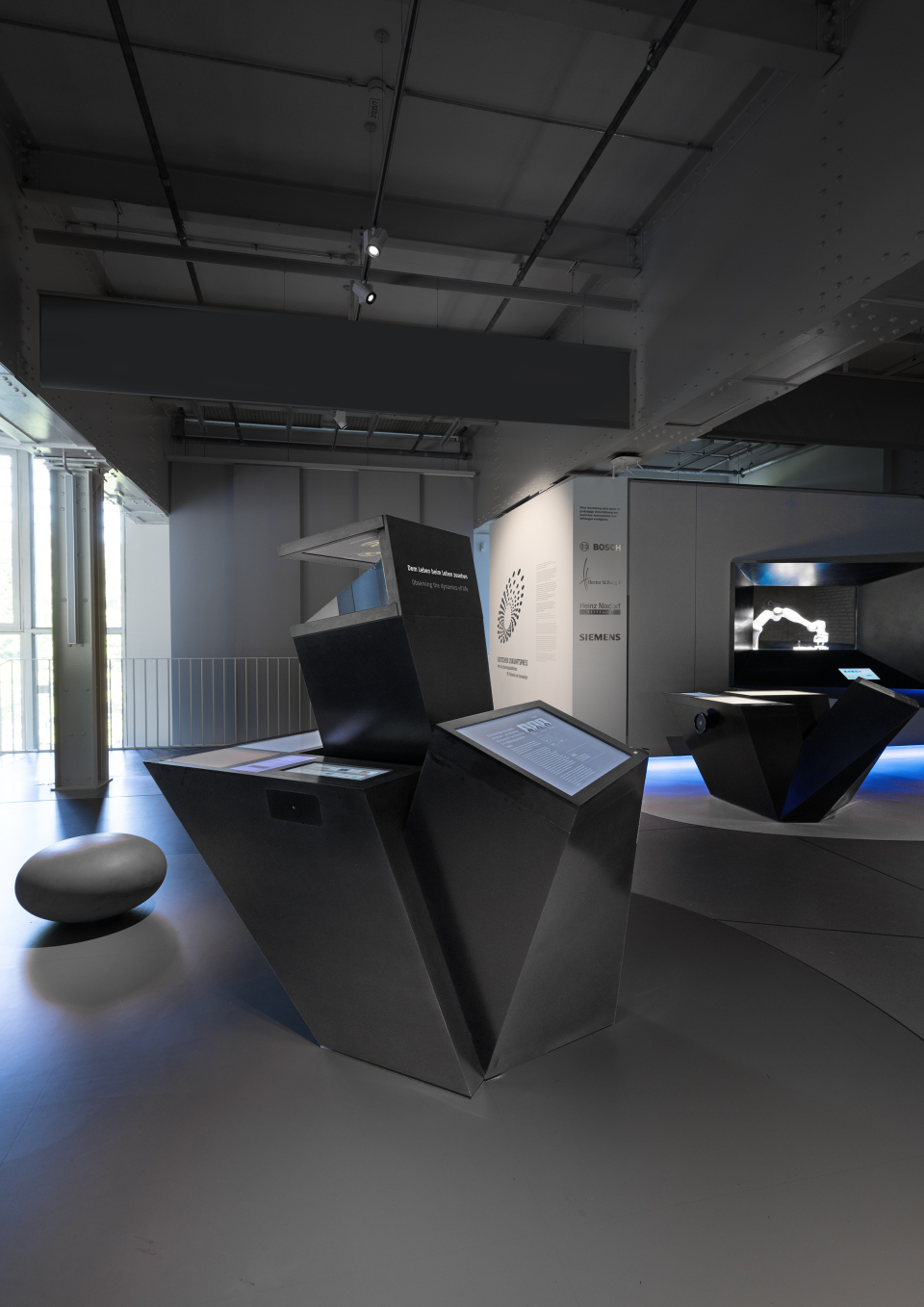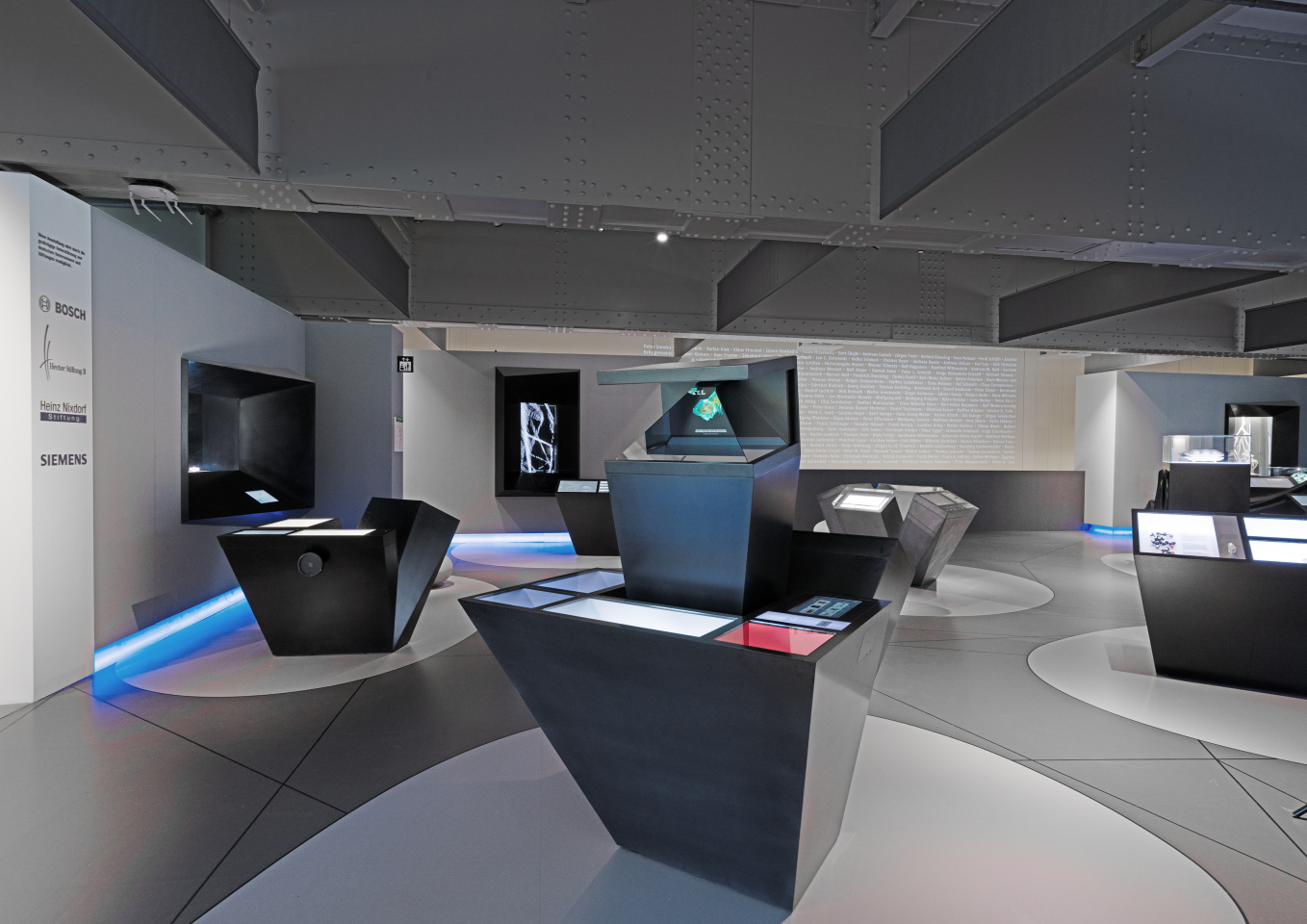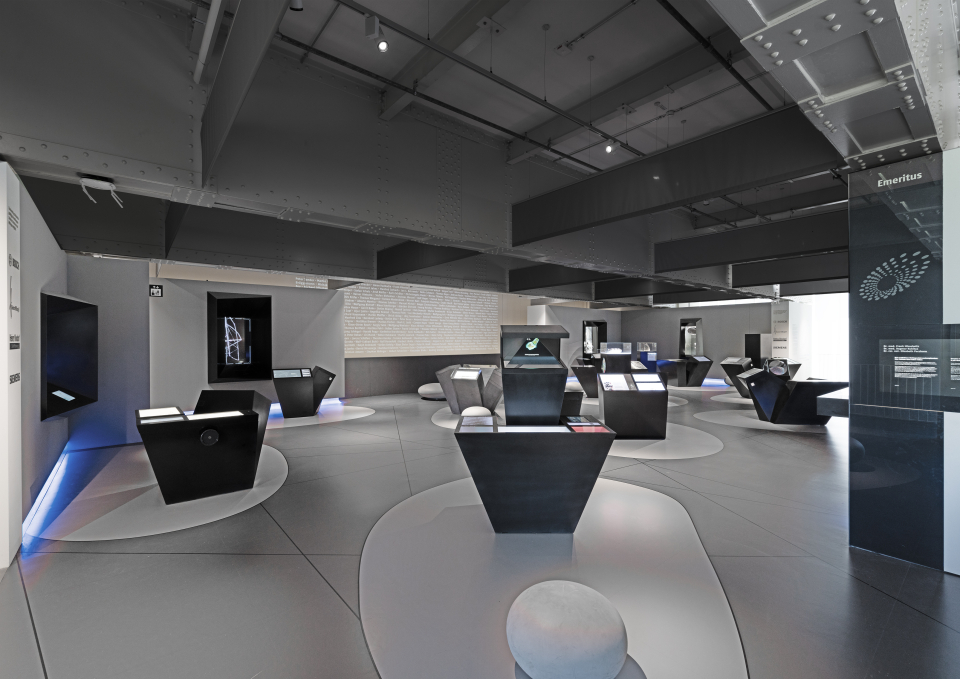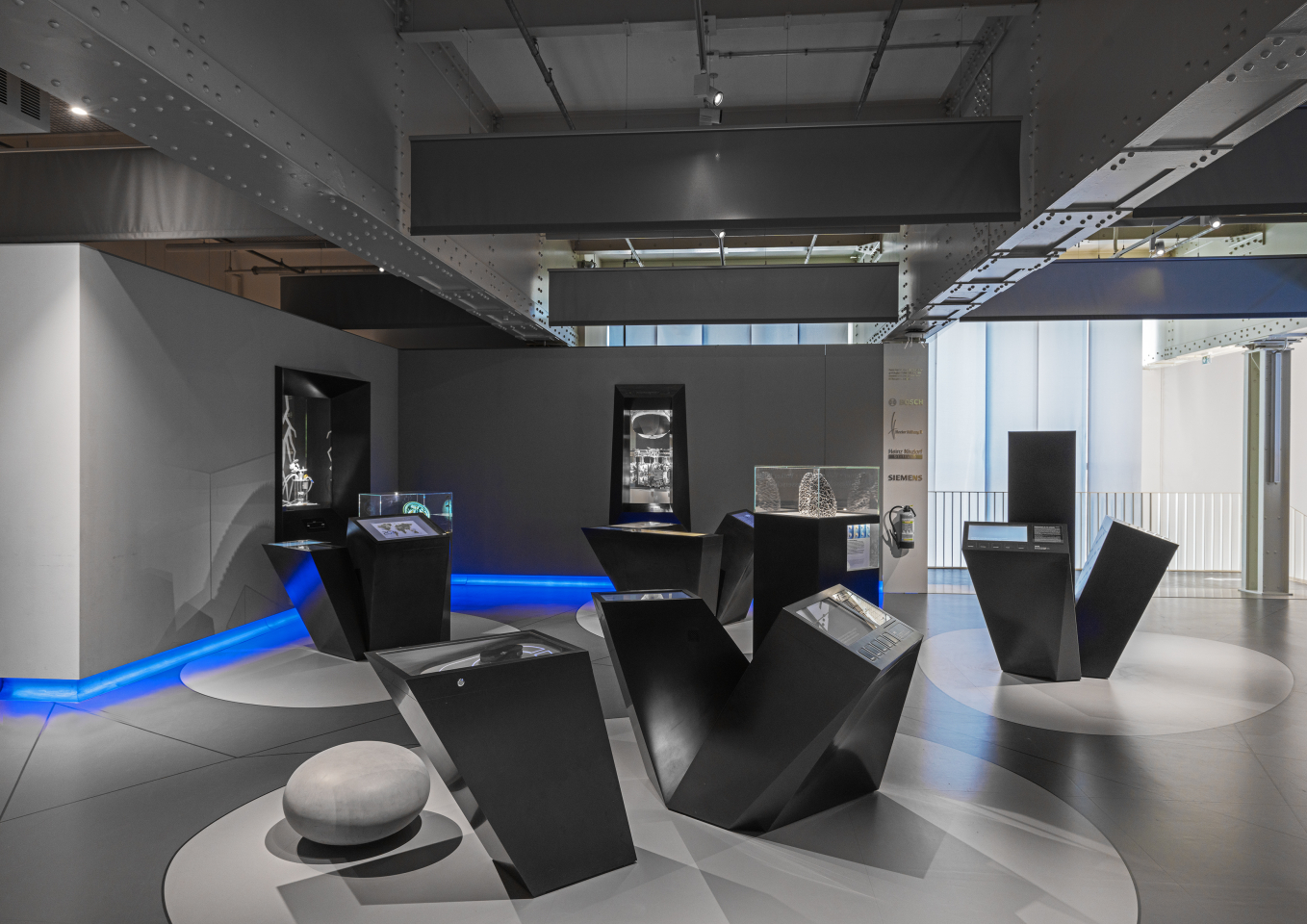
Exhibition design
The module of the winners 2022
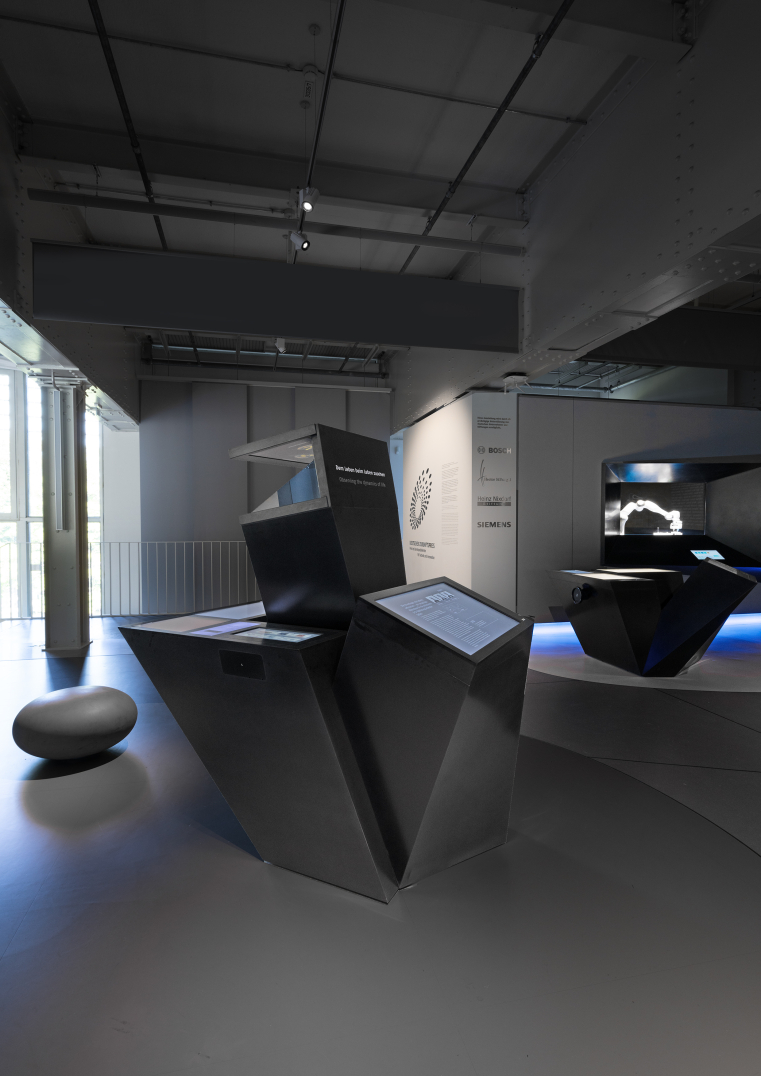
To do so, the winning team relied on the technology of the lightsheet microscope in which the directions of illumination and detection are separate. This alone dramatically reduces the amount of radiation to which the object is exposed but is not enough to observe what goes on inside individual cells: To do this, special beam shapes must be used – the lattice lightsheets. The team combined their complex technology with an innovative concept to generate lightsheets automatically.
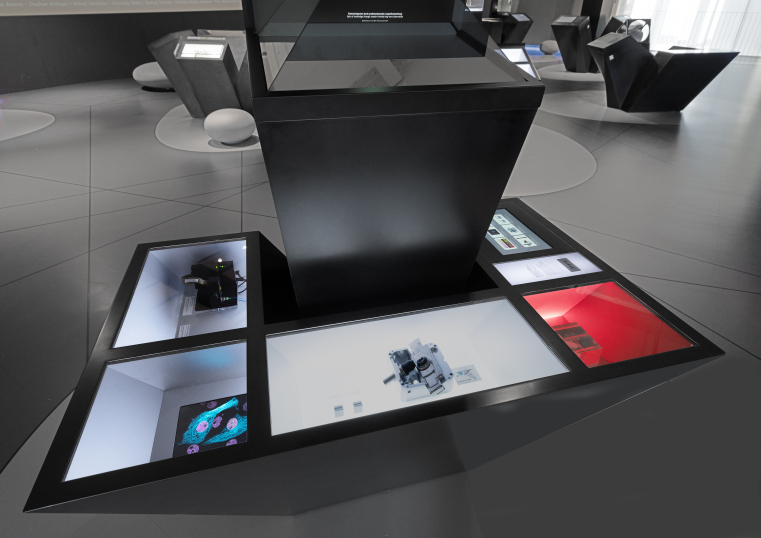
A demonstration, in this case, blood cells magnified 3,300 times, explains the principle of lightsheet microscopy: first, by means of the planar illumination of all cells and, second, by means of lasers that illuminate the individual planes of these cells. This prevents the cells from being damaged by the laser light while still making it possible to observe the brightly lit and well-focused object in focus.

 Gebärdensprache
Gebärdensprache
 Leichte Sprache
Leichte Sprache



